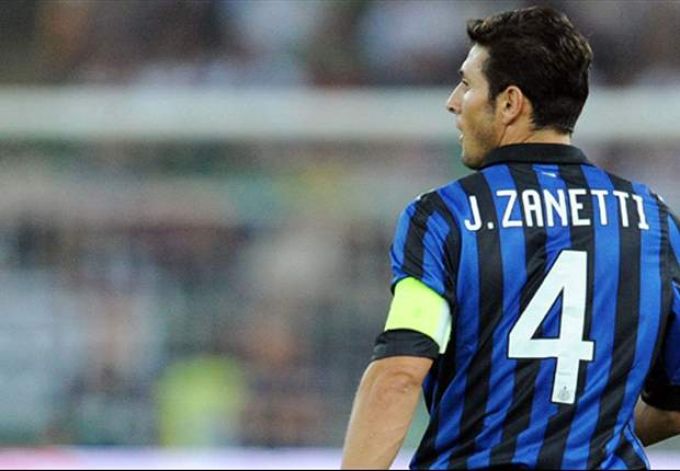
Retired Shirt Numbers: A Tribute to Legends in Soccer
|
|
Time to read 4 min
|
|
Time to read 4 min
Soccer teams around the world honor their most influential players in various ways. From naming stadiums after them to erecting statues, clubs have found creative ways to celebrate their stars. One of the most poignant tributes a club can give a player is retiring their shirt number. This act ensures that the number remains forever associated with the player’s legacy, making it a lasting tribute to their contribution to the sport.
Since the era of a simple 1-11 numbering system, player-specific squad numbers have become ingrained in soccer culture. Some numbers are inherently linked to certain positions or styles of play. For example, the number 10 is often associated with the creative playmaker—think of icons like Lionel Messi or Diego Maradona. Similarly, the number 7 is often reserved for explosive wingers or forwards, as famously worn by Cristiano Ronaldo, who made it synonymous with his global brand, CR7.
But sometimes, a player’s impact transcends the game itself, and their number is retired in their honor, ensuring it is never worn again. Let's dive into the reasons why clubs retire soccer team jerseys and take a look at some famous instances of this practice.
Clubs retire shirt numbers for several reasons, often as a tribute to players who have achieved legendary status or as a mark of respect for those who have passed away. It's not just about honoring a player's skills on the pitch but recognizing their contributions to the club’s history and the football community.
The first instance of a retired shirt number in professional sports is believed to have occurred in 1934 when Ace Bailey of the Toronto Maple Leafs had his number 6 retired. This practice, originally popularized in North America, has since spread worldwide and is now common in soccer too.
The tradition of retiring jerseys has become a widespread phenomenon, with many clubs around the world honoring their best players in this way. Here's a breakdown of some of the most notable cases:
West Ham United : Retired the number 6 in tribute to Bobby Moore , the legendary England captain. They also retired number 38 in honor of Dylan Tombides .
Manchester City : The number 23 was retired following the tragic death of Marc-Vivien Foé .
Real Betis : Retired the number 26 in honor of Miki Roque , who tragically passed away young.
AC Milan : The club retired number 3 in honor of Paolo Maldini , one of the greatest defenders in soccer history. He gave his blessing for his sons to wear the number 3 if they ever played for Milan.
Napoli : Retired number 10 for Diego Maradona , a player whose influence at the club is legendary.
AS Roma : Retired the number 10 in honor of Francesco Totti , who spent his entire career with Roma and is widely regarded as one of the greatest players in Italian football history. His leadership and loyalty to the club earned him this prestigious recognition.
New York Cosmos : Retired number 10 for the legendary Pelé , honoring his contributions to the club and soccer at large.
New York Red Bulls : Number 99 was retired in memory of Bradley Wright-Phillips , a key figure for the team.
Ajax : Retired the number 14 in honor of Johan Cruyff , the Dutch legend who revolutionized soccer both as a player and as a manager. Cruyff’s influence on Ajax and global football remains unmatched.
It’s not just players who get honored with retired numbers. Many clubs have also retired certain shirt numbers to celebrate their supporters, often seen as the "12th man" on the field. Here are a few examples of this tradition:
Leicester City : Reserved number 50 for their mascot, Filbert Fox.
Atlanta United : Reserved number 17 in recognition of their first-ever season in Major League Soccer.
Some clubs go even further and dedicate numbers to supporters in a symbolic way. For example, Bournemouth has dedicated number 50 to its fans, and Portland Timbers has reserved number 3 for their loyal fanbase.
In the world of men's soccer team jerseys, retiring a number carries immense significance. Not only does it honor a player’s legacy, but it also raises the profile of the shirt itself. For fans, it means that the iconic jerseys worn by their heroes are forever etched in history. This can lead to a surge in demand for replica jerseys from brands and clubs.
For soccer clubs, retiring numbers can strengthen their brand identity. Fans want to own a piece of history, and the retired jerseys often become collectibles, leading to increased sales of men's soccer team jerseys, especially replicas. The legacy of a retired number also impacts how current players view their own jersey numbers, knowing that they are now part of an esteemed tradition.
Retiring a shirt number is more than just a gesture; it’s a celebration of a player’s contributions to the sport and their club. Whether it’s a tribute to a legendary player like Diego Maradona or a tragic event like Marc-Vivien Foé’s untimely passing, the act of retiring a jersey ensures that the player’s legacy will never fade from the memory of the supporters. For fans, these numbers become more than just pieces of fabric—they are a symbol of glory, pride, and respect. So, as you shop for your next men's soccer team jersey, remember that every number has a story to tell, and some of them will never be worn again.
Lorem ipsum dolor sit amet, consectetur adipiscing elit, sed do eiusmod tempor incididunt.
